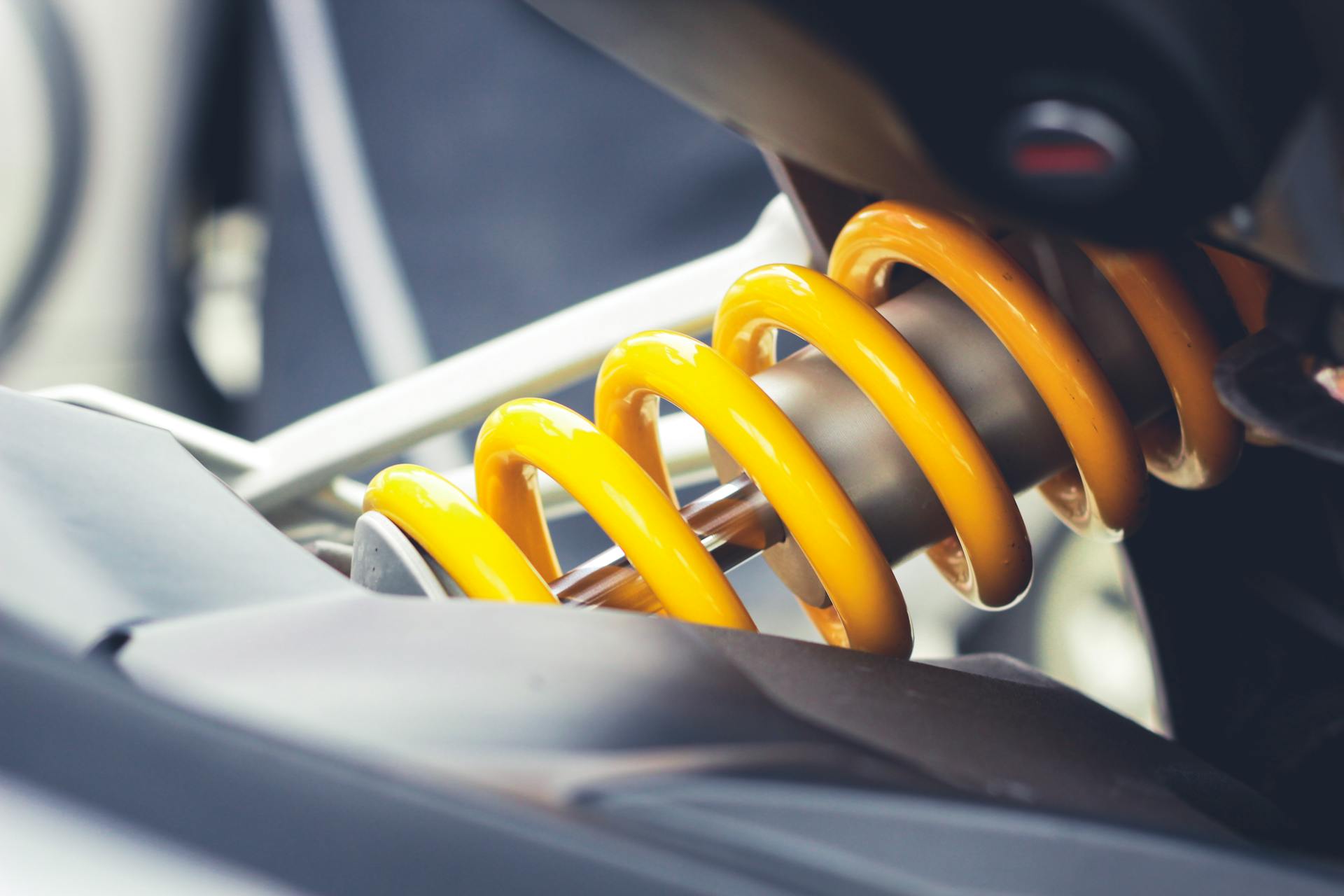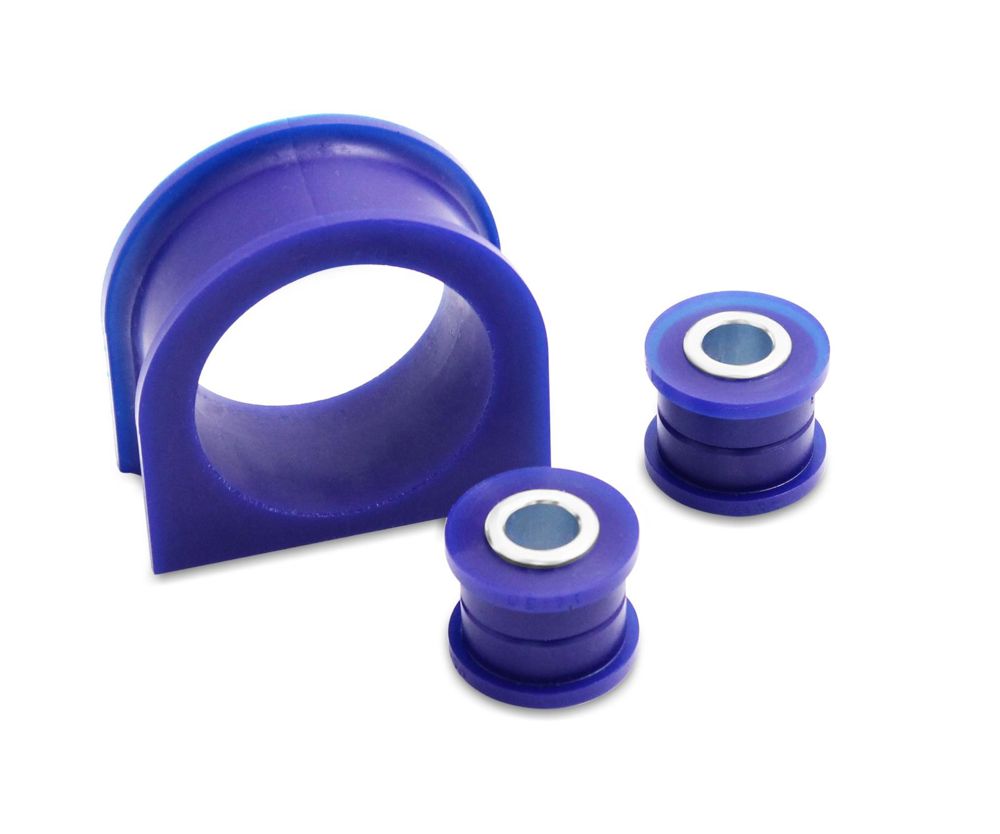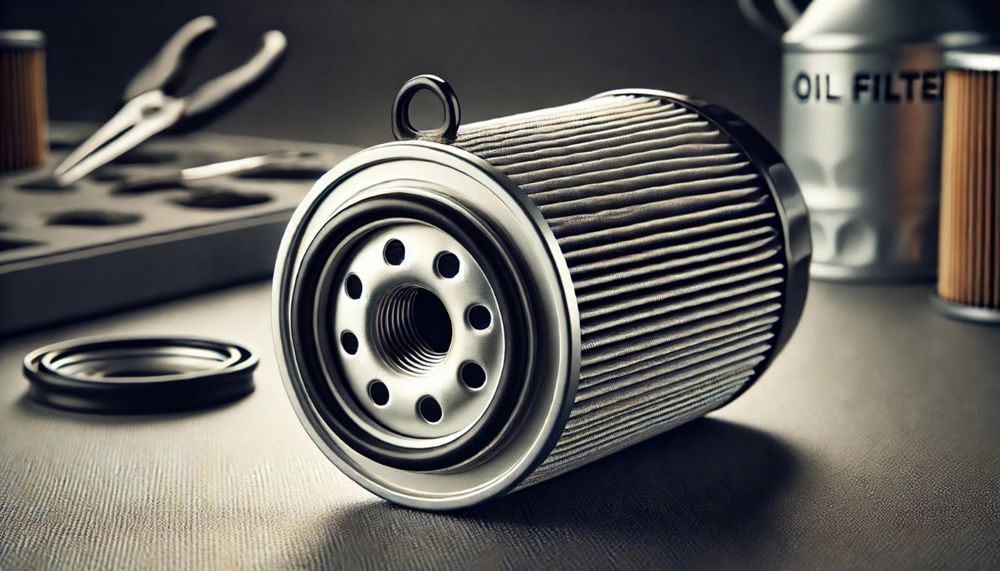
 10th Oct 2024
10th Oct 2024
A Simple Guide to Shock Absorbers
You don’t see them, and we doubt you even think about them much, but it’s worth knowing a few facts about shock absorbers, as most vehicles will need to have them replaced at some point during their lifespan. Whether you’re looking to buy replacement shock absorbers yourself or simply want to understand what your garage technician is doing, our guide helps to explain the basics.
Why do we use shock absorbers in our vehicles?
Shock absorbers are a crucial part of vehicles’ suspension systems. Without them, we’d have less control over our car’s motion when its tyres come into contact with bumps or an uneven surface in the road. Your car's springs control some of the jarring or bouncy movement you feel when goes over a bump. But springs alone don't damp the energy of that up and down movement, which is hard on the vehicle, uncomfortable for you, and potentially dangerous.
Shock absorbers absorb some of that impact, slowing the spring as it compresses and extends, and quickly returning it to a neutral position.
- Shock absorbers work with a vehicle’s springs and suspension system, absorbing the impact and rebound movement over bumps to improve vehicle control.
- Smooths out bumps and vibrations, and makes sure your tyres are always in contact with the road surface.
- They improve your tyres’ braking performance.
- They improve steering responsiveness.
- They provide a more comfortable ride for the driver and passengers.
Shock absorbers have quite an important role, which is why they are checked each year in the UK for wear, tear or damage at a vehicle’s annual MOT.
How do shock absorbers work?
A shock absorber consists of a piston attached to a rod at one end, inside a sealed tube filled with hydraulic fluid. When the vehicle encounters a bump, the piston moves up and down inside the shock absorber, forcing hydraulic fluid through small valves within the piston.
The more fluid that can pass through the valves, the less resistance there is to the piston’s movement. The less fluid that can pass through, the greater the resistance, which slows down the piston, which in turn controls the suspension's motion.
The resistance level in the piston can vary, allowing the shock absorber to adapt to different driving conditions, from smooth carriageways to rough terrain. For example, when you unexpectedly hit a pothole, the resistance from your shocks is greater than when you drive slowly around a bend in the road.
By managing the vibration of the springs and keeping the tyres in contact with the road, shock absorbers prevent excessive bouncing, swaying, or instability, ensuring that the vehicle remains steady and responsive, even on uneven surfaces.
Do shock absorbers deteriorate over time?
Yes. They won’t break down all at once, but they will deteriorate slowly over time.
On average, you can expect shock absorbers to last between 50,000 and 100,000 miles (roughly 80,000 to 160,000 km), but a few factors can negatively affect their lifespan, such as:
- A more aggressive driving style
- Regularly driving over rough terrain
- Heavy payloads
- Regularly towing trailers
- A very wet or salty environment
With heavy use in adverse conditions, expect to replace your shock absorbers more frequently.
As shock absorbers deteriorate, there will be a number of impacts on your vehicle. It may be difficult for a driver to notice these incremental differences, which get worse over time, but it’s important to understand that they result in less control over the vehicle.
- Braking distances will increase as the worn shock absorbers and struts reduce the tyre’s traction with the road.
- Body roll will become more noticeable when taking bends and corners, forcing you to reduce your speed or adjust your steering to compensate.
- Reduced steering control when accelerating: When a vehicle accelerates from a standstill, the front end lifts while the rear end drops. The shock absorber's rebound damping manages this front-end lift. In front-wheel-drive vehicles, worn shocks allow more front-end lift, which can lead to a loss of tyre traction and diminished steering control.
An uncomfortable ride: Small bumps and tyre movements are transferred throughout the vehicle, making the ride feel rough, noisy and uncomfortable.
Increased wear on tyres; reduced tyre performance: We already mentioned loss of traction between the tyre and the road, which aggravates control issues. In addition, the waning shock absorber performance allows the wheels to move up and down more freely, which causes uneven tyre wear. Over time, noise from tyres increases, too.
Can you drive a car with worn or damaged shock absorbers?
Technically, yes, you can, but the loss of control caused by worn or damaged shocks means it could be dangerous, so don’t do it if you know there’s a problem before you start your journey.
A vehicle with worn shock absorbers is likely to lean heavily to one side on bends; you may have less traction with the road and steering could be affected, too. In an emergency, this could lead to a serious accident.
If you suspect your shock absorbers are badly worn or damaged you should get them checked as soon as possible. In the meantime, keep your speed low, avoid sharp turns and sudden stops.
Driving on damaged shock absorbers can also cause expensive damage to other parts of your vehicle, especially the components related to the suspension steering and braking, resulting in bent wheels and cracked frames.
Signs that your shock absorbers need replacing
Your shocks and/or struts could need attention if you spot any of these signs:
Physical signs
- The drive is getting bouncier: your shocks should absorb the impact quickly after hitting a bump, but you might notice the vehicle bouncing excessively afterwards if your shocks are wearing out. You can also conduct a manual “bounce test” while the vehicle is stationary. Place your weight on the front bumper, then release suddenly and watch what happens; if it bounces repeatedly your shock absorbers probably need replacing.
- Front-end dip: When you use your brakes, does it feel as if the nose of the car dips briefly towards the ground? This is especially noticeable during hard braking.
- Vehicle is rolling, leaning or swaying on bends: this can give you an alarming feeling of less control, and it’s a sign that your shock absorbers aren’t managing the impact of weight transfer as well as they should.
- Feeling vibration through your steering wheel, even on smooth roads: might mean your shocks, struts or steering stabiliser need attention (a little vibration on a bumpy road is to be expected).
- “Rear squat” when accelerating: when you accelerate, worn shock absorbers mean the energy isn’t distributed evenly; the momentum shifts to the rear, causing it to “squat”, while the front of the car lifts up.
- Metallic clunking or knocking noises: worn shocks or struts can make metal-to-metal noises when the components are worn out.
Visual signs
- Visually inspect the shock absorber mounting points for signs of corrosion or damage, such as cracks or dents.
- Leaking hydraulic fluid: if this is visible on the exterior surface of the shocks or struts, it could mean the seals have failed and your shock absorbers can’t function properly.
- Tyres show uneven wear: tyres can show uneven wear if they have less consistent traction with the road owing to worn shocks or struts.
Shock absorber testing tools
A keen car enthusiast or professional service centre will also have other methods to test the performance of shock absorbers, including tools such as:
- A bounce tester: measuring the time taken for the shock to return to its original position.
- A damping force tester: measures the damping force of a shock absorber
- Compression tester: to test the compression strength of a shock absorber and measure how much resistance it provides.
Do shock absorbers need to be replaced in pairs?
Yes. Whenever you need to replace a shock absorber, it's important to also replace the one on the opposite side of the same axle (front or rear). This ensures both shocks are in similar working condition. If you pair a new shock with an older one, the difference in wear and damping performance across the axle can cause the new shock to work harder, which may lead to faster damage and wear.
What's the difference between a shock absorber and a strut?
We've mentioned struts a few times in this article. Some people use the terms shocks and struts interchangeably, but although they are closely related, they are distinct parts with different functions. Here's a simple explanation:
Shock Absorber: A shock absorber controls the up-and-down motion of the vehicle’s wheels, providing a smooth ride by damping suspension movement. It’s a stand-alone component that doesn’t support the vehicle’s weight.
Strut: A strut combines a shock absorber with structural support, helping to bear the vehicle's weight and maintain suspension alignment. It’s more complex and often found in the front suspension.
Key Difference: While both components control the suspension movement, struts also support the vehicle’s weight and contribute to the suspension’s structural integrity, unlike shock absorbers, which focus solely on damping.
Do all vehicles have struts?
No. Your vehicle might have shocks and springs on all four wheels, or some other configuration such as shocks on the front and struts on the rear. It depends on the vehicle.
How do I know if I have shocks or struts?
The easiest way is to look at your owner’s manual, which will include lots of information about the vehicle’s suspension system.
If you know what you’re looking for, another way is to look underneath your vehicle. Check both the front and rear wheels, as some vehicles have different setups in each.
Identifying shock absorbers:
- Appearance: Shock absorbers are long, cylindrical tubes. They are typically mounted separately from the coil spring, connecting the vehicle's frame or body at the top and the suspension or axle at the bottom.
- Separate Spring: If you see a coil spring next to this tube (not wrapped around it), it’s a shock absorber.
Identifying Struts:
- Appearance: Struts are thicker and integrate multiple components into one assembly. They often have a coil spring wrapped around them and connect directly to the steering knuckle or suspension arm.
- Combined Unit: If the coil spring is wrapped around the shock absorber, forming a single unit, that’s a strut.
Key Differences:
- Shocks: Separate from the spring, smaller, and simpler.
- Struts: Integrated with the spring, bulkier, and part of the steering/suspension system.
We’ve kept this guide to shock absorbers as straightforward as possible, but it can be a complex topic. If you’re looking for the right products for your vehicle and you’re not sure what you need, please get in touch with our friendly team of experts!
TDC Automotive has a huge selection of regular and performance shock absorbers from leading brands such as Bilstein, Sachs and ST Suspension, as well as other suspension and steering car parts, all at low prices.




